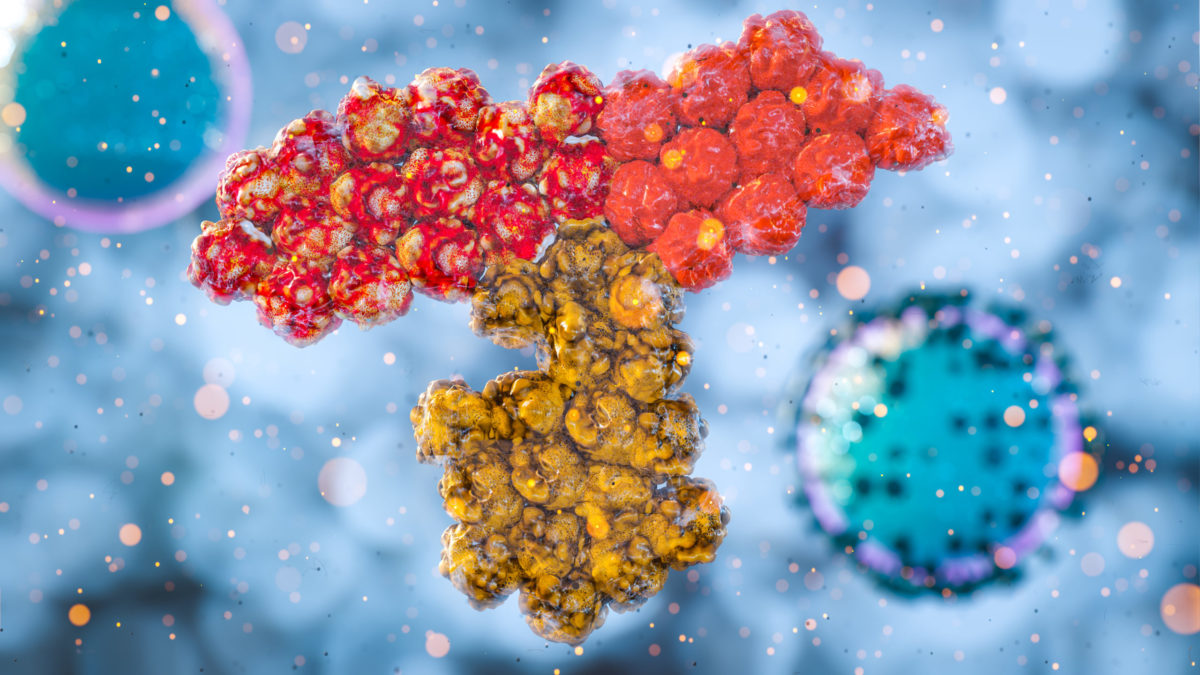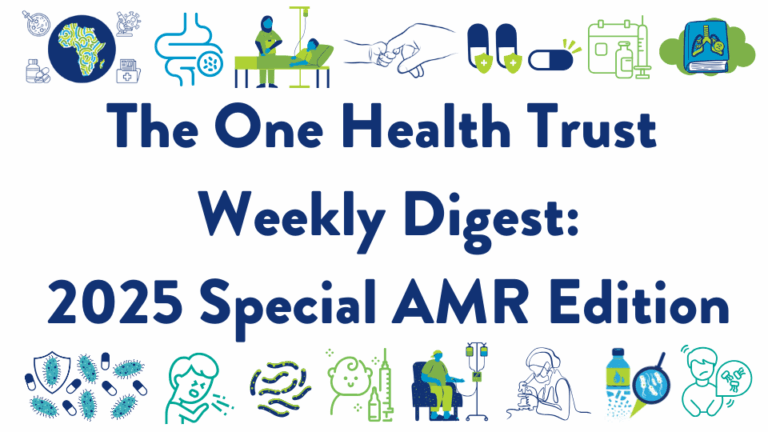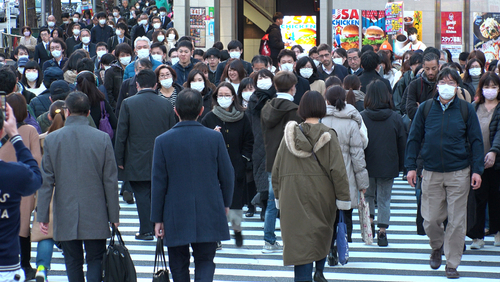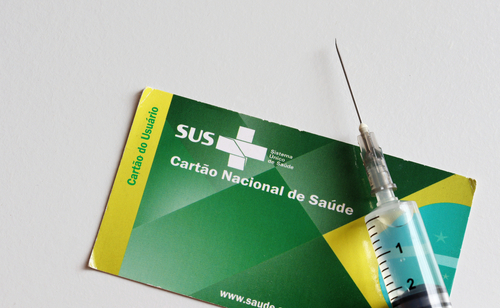February 08, 2021

COVID-19
Excess death among Latino people in California during the COVID-19 pandemic. Latinos consist of 39% of California’s population but account for 48% of COVID-19 confirmed deaths through December 2020. This study investigated this heterogeneous population’s within-group differences, including age, sex, place of birth, education, and occupation. Researchers estimated expected deaths using autoregressive integrated moving average (ARIMA) methods with data from the pre-pandemic period and then estimated the number of excess deaths by subtracting observed deaths from expected deaths. Results indicate that Latino people in California experienced a 31% increase in mortality between March 1 and October 3, 2020, with excess deaths estimated at 10,316 (95% Prediction Interval 9,570-11,030). Excess death rates were greatest for people born in Mexico (RR 1.44; 95% PI 1.41 to 1.48) or Central America (RR 1.49; 95% PI 1.37 to 1.64), with less than a high school degree (RR 1.41; 95% PI 1.35 to 1.46), working in food-and-agriculture (RR 1.60; 95% PI 1.48 to 1.74), or working in manufacturing (RR 1.59; 95% PI 1.50 to 1.69). Among people working in essential businesses, the percent excess in mortality was more than double for foreign-born Latinos (RR 1.57; 95% PI 1.47 to 1.68) than for US-born Latinos (RR 1.21; 95% PI, 1.15 to 1.27). Results indicate that pandemic control strategies of individual behavioral change and economic shutdowns have not protected Latinos from excess mortality. Disparities are likely to increase unless actions are taken that prioritize marginalized populations, such as policies enforcing occupational safety, early vaccination, and expanded access to medical care. [medRxiv]
Comparative cost-effectiveness of SARS-CoV-2 testing strategies in the USA: a modelling study. Researchers in the United States modelled SARS-CoV-2 transmission at the population level and daily viral load dynamics at the individual level to assess eight surveillance testing strategies. They found that the strategy most likely to be cost-effective (assuming a societal willingness to pay of US$100,000 per year of life lost averted and a price of $5 per test) was weekly testing followed by a 2-week isolation period after a positive test result under a rapid transmission scenario (Re of 2.2) and monthly testing of the population followed by 1-week isolation rather than 2-week isolation under low transmission scenarios (Re of 1.2). They concluded that extensive expansion of SARS-CoV-2 testing programmes with more frequent and rapid tests across communities and the isolation of individuals with confirmed infection is essential for mitigating the COVID-19 pandemic. Furthermore, resources recouped from shortened isolation duration could be cost-effectively allocated to more frequent testing. [Lancet Public Health]
COVID-19 Cases and Transmission in 17 K–12 Schools in the US. A study of COVID-19 transmission in schools analyzed outbreaks in kindergarten through grade 12 classroom settings. Researchers gathered data on 4,876 students and 654 staff members from 17 rural schools in Wisconsin and compared school-attributable COVID-19 case rates to those in the surrounding community from August 31 to November 29, 2020. The schools included three public school districts, one private school district, and one independent private school. About 12 percent of the children attended school virtually, while the others attended in-person instruction. Infection mitigation measures included mask-wearing among students and staff, social distancing, altered classroom seating arrangements, and observed student masking compliance ranging from 92.1% to 97.4%. During this period, COVID-19 case rates among school students and staff (3,453 cases per 100,000 population) were lower than those in the county overall (5,466 per 100,000). Five percent of cases among students were found to be acquired at school, while no cases among staff members were linked to the in-school transmission. The authors conclude that in-person instruction with mitigation strategies may not place children at higher risk than they experience in the general community. [CDC]
Safety and efficacy of an rAd26 and rAd5 vector-based heterologous prime-boost COVID-19 vaccine: an interim analysis of a randomised controlled phase 3 trial in Russia. Researchers in Russia conducted a randomised, double-blind, placebo-controlled, phase 3 trial in 25 hospitals and polyclinics in Moscow, Russia, on the heterologous recombinant adenovirus (rAd)-based SARS-CoV-2 vaccine Gam-COVID-Vac (Sputnik V), provisionally approved following phase 1/2 trial results in August 2020. In the study, the vaccine was randomly assigned in a 3 to 1 ratio (vaccine to placebo) among 21,977 participants aged 18 years or older with negative SARS-CoV-2 PCR and IgG and IgM tests, and no infectious diseases in the 14 days before enrolment. The primary outcome was the proportion in either group of participants with COVID-19 confirmed by PCR from day 21 after receiving the first dose (corresponding to the time they receive the second dose), and secondary outcomes included incidence and severity of adverse events, immunogenicity, and safety. Vaccine efficacy was estimated as 91.6% and 91.1% on days 21 and 28 after receiving the first dose. However, the estimated vaccine efficacy against confirmed COVID-19 occurring at any time after the first dose dropped to 73.1% (95% CI, 63.7 to 80.1) with most cases in the vaccine group occurring before the second dose was administered. [The Lancet]
Pfizer BioNTech vaccine likely to be effective against B1.1.7 strain of SARS-CoV-2. With the rise of new and potentially more transmissible variants of the coronavirus emerging in the United Kingdom, researchers are investigating if new variants of SARS-CoV-2 attenuate vaccine efficacy. Reporting preliminary in vitro results and using the B1.1.7 variant of the virus found in the UK, they found that, on average, double the concentration of serum antibodies was necessary to neutralize the virus. The most important implication from the findings was that people over 80 might require their second vaccine dose before they can have sufficient protection. When including mutations from the South Africa variant of the virus, including an E484K mutation, the required serum antibodies’ concentration increased by 10-fold, raising concerns on the efficacy of the current vaccines and implying that second-generation vaccines may be needed to stay ahead of future mutations. [University of Cambridge]
Drug Resistance and Global Health
A coordinated strategy for containment of multidrug-resistant Gram-negative bacteria carriage in NICU. Researchers in Italy conducted a prospective intervention study at a neonatal intensive care unit study to assess the efficacy of a coordinated strategy to reducing MDR-GNB prevalence, including (a) two-month intensification of sample collection, (b) stakeholders meetings, (c) improvement of prevention measures and antimicrobial policies. They revealed that the prevalence of MDR-GNB and ESBL-KP carriage significantly decreased the year after the intervention compared to the previous year (20.6% vs. 62.2%; p < 0.001 and 11.1% vs. 57.8%; p < 0.001). MDR-GNB and ESBL-KP were not detected at all for three and five months, respectively. Further, they demonstrated that admission in the post-intervention period significantly reduced the risk of MDR-GNB carriage (adjusted odds ratio 0.21, 95% CI 0.076 to 0.629; p < 0.001). In conclusion, a coordinated strategy of multiple interventions with active cooperation between epidemiologists and clinicians in the NICU can effectively reduce circulation and, in particular, the carriage of the most dangerous ESBL-KP strains. [BMC]
HIV testing and ART initiation heavily impacted by the COVID-19 lockdown. Researchers in South Africa conducted an interrupted time series analysis on programmatic data from 65 primary care clinics. They revealed that lockdown was associated with an estimated 47.6% decrease in HIV testing in April 2020 (incidence rate ratio, IRR 0.524, 95% CI 0.446 to 0.615). ART initiations had an estimated 46·2% decrease in the first week of lockdown (March 30, 2020, to April 5, 2020; IRR 0.538, 0.459 to 0.630). There was no marked change in the number of ART collection visits (IRR 0.932, 95% CI 0.794 to 1.093). The researchers concluded that while efforts to continue providing ART appeared to have been successful during the lockdown, HIV testing and ART initiations were heavily affected. After lockdown, and in any future COVID-19 restrictions, strategies to catch up with HIV testing and increase ART initiation should be implemented, alongside efforts to maintain treatment provision. [Lancet HIV]
Estimating the health impact of vaccination against ten pathogens in 98 low-income and middle-income countries from 2000 to 2030: a modelling study. Since the World Health Organization introduced the Expanded Programme on Immunization in 1974, vaccination has caused substantial reductions in mortality from infectious disease worldwide. A study published in The Lancet modeled the effect of childhood vaccination programs in low- and middle-income countries (LMICs) by estimating deaths and disability-adjusted life-years (DALYs) averted by vaccination against hepatitis B virus, Haemophilus influenzae type B, human papillomavirus (HPV), Japanese encephalitis, measles, Neisseria meningitidis serogroup A, Streptococcus pneumoniae, rotavirus, rubella, and yellow fever from 2000 to 2030. Modeling results from various institutions in the United States and United Kingdom were used to estimate vaccine impact in 98 LMICs. The authors found that coverage increases globally reflect the increase in countries eligible for support from Gavi, the Vaccine Alliance. The authors estimated that vaccination from 2000-2019 reduced overall mortality due to the pathogens studied by 45% and that vaccination would have prevented 72% of associated mortality in the 2019 annual birth cohort in the studied countries. These findings emphasize the importance of continuing progress toward target vaccination rates in LMICs. [The Lancet]
New surveillance criteria for neonatal CLABSI. A Working Group on Neonatal Infectious Diseases in the Netherlands conducted a consensus procedure to develop neonatal CLABSI surveillance criteria. Neonatal CLABSI, a bloodstream infection occurring more than 72 hours after birth, is associated with an indwelling central venous or arterial line and is laboratory-confirmed by one or more blood cultures. Additionally, the blood culture finding should not be related to an infection at another site, and one of the following criteria can be applied: 1) A bacterial or fungal pathogen is identified from one or more blood cultures. 2) The patient has clinical symptoms of sepsis, and 2A) a common commensal is identified in two separate blood cultures or, 2B) a common commensal is identified by one blood culture and C-reactive protein level is above 10 mg/L in the first 36 hours following blood culture collection. The newly developed Dutch neonatal CLABSI SC requires international agreement to identify best infection prevention and control practices. [BMC]
Effectiveness of Contact Precautions to Prevent Transmission of Methicillin-Resistant Staphylococcus aureus and Vancomycin-Resistant Enterococci in Intensive Care Units. Antimicrobial-resistant pathogens are a significant cause of morbidity and mortality among ICU patients. Bundled interventions, such as those combining stewardship programs, surveillance, contact precautions, and environmental decontamination, are common approaches to combat the problem but make it difficult to measure the efficacy of a single strategy. In this study, researchers used data from the Strategies to Reduce Transmission of Antimicrobial Resistant Bacteria in Intensive Care Units (STAR*ICU) trial to model the effect of contact precautions on the transmission of methicillin-resistant Staphylococcus aureus (MRSA) and vancomycin-resistant enterococci (VRE). They also conducted a meta-regression to identify ICU-level factors associated with contact precaution effects. Of 10,579 admissions, 21% (n=2,194) were put on contact precautions. Results indicate that contact precautions reduce transmission by 16% (Credible Interval -38%-15%). They did not find any associations between ICU-level factors, such as ICU type and healthcare worker–patient contact rate, and contact precaution effects. While results indicate little effect from contact precautions on MRSA and VRE transmission, the study did identify differences in transmission dynamics between the two pathogens. Transmission and importation were higher, while clearance was lower for VRE than for MRSA, suggesting the overall prevalence of VRE was higher than that of MRSA in ICUs. [Clinical Infectious Diseases]
Photo: Shutterstock











